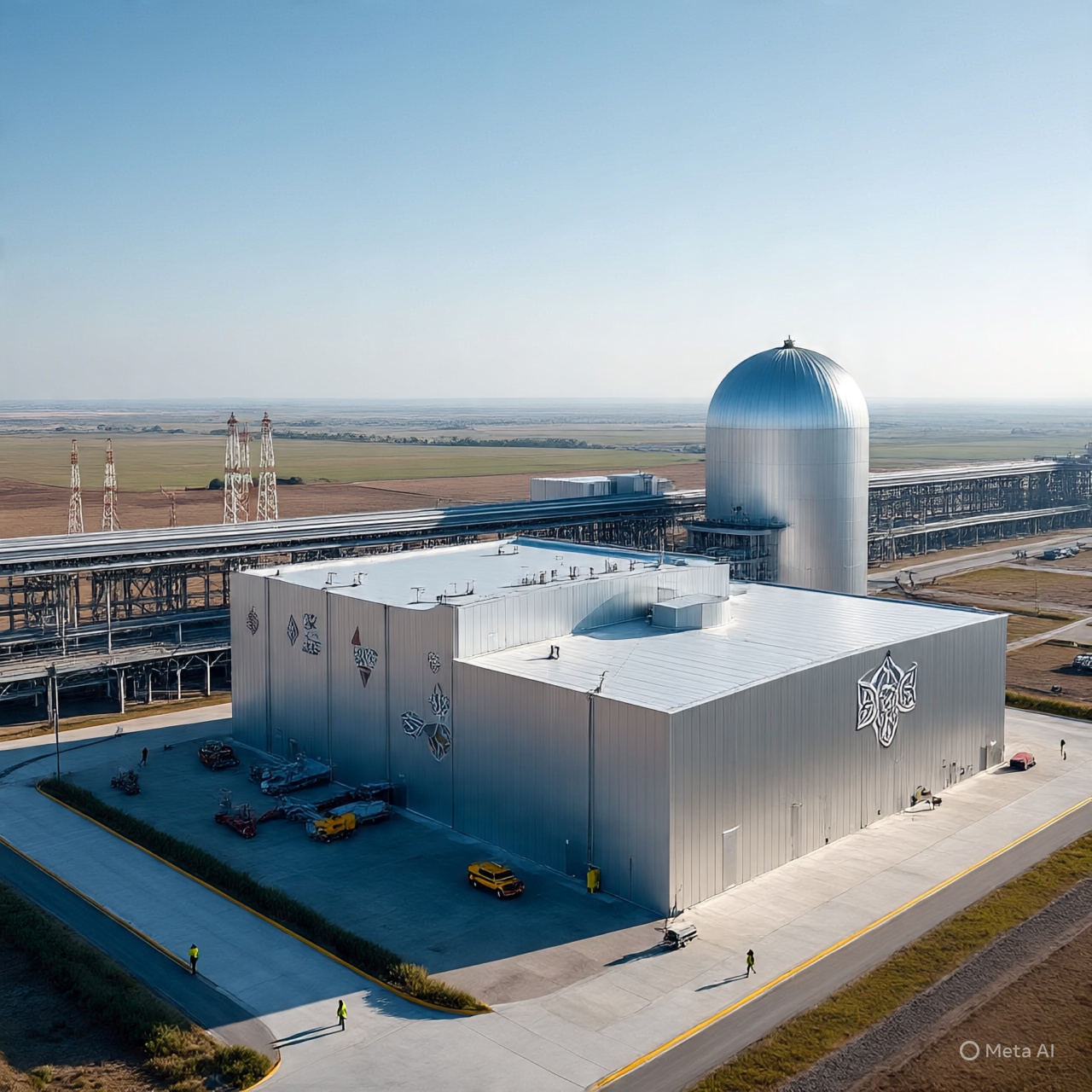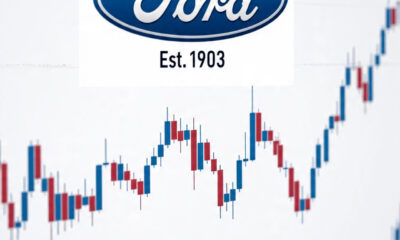Trending news
Why ASX Copper Miners Could Outperform in 2026
Published
2 weeks agoon
By
Aniket Pahwa
While energy stocks struggle and gold steals headlines, ASX copper miners are quietly positioning for a potentially explosive 2026. Copper prices currently trade around $3.80-4.30 per pound, and several factors suggest the red metal could surge significantly higher over the next 12-18 months.
The shift from banks to mining stocks is already underway on the ASX according to recent analysis. With commodities strengthening after volatile periods and the Australian dollar softening, commodity exporters are gaining favor among institutional investors looking for value.
The Electric Vehicle Copper Boom
Electric vehicles require roughly four times more copper than traditional cars. As EV adoption accelerates globally, copper demand from the automotive sector is set to explode.
A single electric vehicle uses approximately 80-85 kilograms of copper for motors, batteries, inverters, and wiring. Compare that to just 20-25 kilograms in a conventional car, and the magnitude of increased demand becomes clear.
Global EV sales continue growing at double-digit rates despite occasional slowdowns in specific markets. China alone accounts for over 60% of worldwide EV production, creating massive copper consumption that shows no signs of peaking.
Tesla, BYD, and other major manufacturers are expanding production capacity aggressively. Each new gigafactory represents millions of pounds of additional annual copper demand that mining companies must somehow supply.
Renewable Energy Infrastructure
Solar and wind installations consume enormous quantities of copper for electrical wiring, transformers, and power transmission. The renewable energy buildout occurring globally creates structural copper demand that will persist for decades.
A single wind turbine contains 3-5 tons of copper. Offshore wind turbines require even more due to subsea cabling needs. As countries pursue net-zero emissions targets, wind farm construction accelerates, pulling copper demand higher.
Solar installations similarly require substantial copper for inverters, wiring, and grid connections. With solar costs having dropped dramatically, installation rates continue climbing in both developed and emerging markets.
Grid modernization to accommodate renewable energy adds another layer of copper demand. Aging electrical infrastructure needs replacement, and new smart grid technologies are copper-intensive by design.
Supply Deficit Looming
While demand soars, copper supply faces constraints that could create sustained deficits. Major copper mines take 10-15 years to develop from discovery to production, meaning supply can’t respond quickly to price signals.
Ore grades at existing mines continue declining as high-grade deposits deplete. Miners must process more ore to extract the same amount of copper, increasing costs and reducing output from mature operations.
Political risks in major producing countries create supply uncertainty. Peru, Chile, and the Democratic Republic of Congo account for substantial global production, and all face varying degrees of political instability or regulatory uncertainty.
Environmental permitting has become increasingly difficult in developed countries. Even when economically viable deposits are discovered, obtaining approval to mine them can take years or fail entirely.
Top ASX Copper Plays
Several ASX-listed companies offer exposure to copper’s potential rally:
BHP Group recently doubled capital expenditure on its copper division compared to iron ore. The mining giant is investing heavily in Olympic Dam and Oak Dam in South Australia, Escondida in Chile, and new Argentine projects.
This strategic pivot toward copper reflects BHP’s view that the metal’s long-term demand profile justifies major capital commitments despite near-term price volatility.
Sandfire Resources operates high-grade copper mines in Western Australia and recently expanded internationally. The company’s Matsa operation in Spain provides geographic diversification.
29Metals (formerly known as Independence Group) operates copper-zinc mines including the Capricorn Copper operation in Queensland. The company offers leveraged exposure to copper prices through relatively low-cost production.
OZ Minerals was recently acquired by BHP, demonstrating how major miners are willing to pay premiums to secure quality copper assets. The takeover validated copper’s strategic importance.
Copper vs. Iron Ore
The ASX mining sector has historically been dominated by iron ore producers serving Chinese steel mills. That dynamic is shifting as iron ore faces structural challenges while copper benefits from energy transition tailwinds.
Iron ore prices around $95-110 per tonne reflect concerns about Chinese property sector weakness and steel production cuts. While prices have stabilized, the upside appears limited compared to potential copper gains.
China’s economy is transitioning from infrastructure-heavy growth toward consumption and services. This reduces steel intensity and iron ore demand while increasing demand for manufactured goods that require copper.
For ASX investors, this suggests rebalancing from iron ore exposure toward copper miners could capture the next commodity super-cycle.
Technical Setup Looks Bullish
Copper prices consolidating in the $3.80-4.30 range have formed a base that could launch higher. The metal briefly touched $10,000 per tonne earlier in 2025 before retreating, demonstrating potential for significant rallies when conditions align.
Technical indicators show copper building energy for the next move. Whether that move is up or down depends on economic data and demand trends, but the consolidation pattern suggests a breakout is approaching.
Historically, copper rallies hard once they begin. The metal’s relatively small market compared to oil or gold means it can move violently when fund flows shift toward commodities.
Risks to Consider
Despite bullish fundamentals, several risks could derail copper’s rally:
Recession Fears: Copper is highly economically sensitive. If tariff wars trigger genuine recession, industrial copper demand would crater, overwhelming any supply deficits.
China Slowdown: As the world’s largest copper consumer, Chinese economic weakness directly impacts prices. If Beijing’s stimulus fails to reignite growth, copper demand disappoints.
Substitution: In some applications, aluminum or other materials can substitute for copper when prices rise too high. This demand destruction limits upside.
Dollar Strength: Copper is priced in dollars globally. If the greenback surges on safe-haven demand, copper prices typically fall mechanically.
Investment Strategy
For investors wanting copper exposure, ASX miners offer several advantages over international alternatives. Australia’s political stability, rule of law, and mining expertise create lower sovereign risk than many copper-producing countries.
However, mining stocks are volatile and carry operational risks beyond just commodity exposure. Diversifying across multiple copper producers reduces company-specific risk while maintaining commodity exposure.
Another approach is combining large, diversified miners like BHP with smaller, pure-play copper companies. This balances stability with growth potential.
Exchange-traded funds focused on copper miners provide easy diversification but carry management fees and may include international exposure you don’t want.
The Bottom Line
ASX copper miners could significantly outperform in 2026 if the bullish thesis plays out. Electric vehicle adoption, renewable energy infrastructure, and supply constraints create a powerful fundamental setup.
With copper prices consolidating after earlier 2025 weakness, entry points look reasonable for patient investors. The risk-reward favors copper over struggling energy stocks or expensive gold miners at current levels.
Whether through BHP’s diversified exposure or smaller pure-play copper companies, ASX investors have multiple ways to position for copper’s potential rally. As the market shifts focus from banks to mining stocks, copper miners deserve serious consideration for portfolios looking toward 2026.
⚠️ Disclaimer
This article is for informational purposes only and does not constitute financial advice. Always conduct your own research or consult with a professional financial advisor before making investment decisions.
You may like
Trending news
S&P 500 Hits All-Time High as September Inflation Cools to 3%, Below Expectations
Published
4 days agoon
October 24, 2025By
Aniket Pahwa
The S&P 500 surged to fresh all-time highs on October 24, 2025, after September’s Consumer Price Index came in cooler than expected, reigniting hopes that the Federal Reserve will deliver two more rate cuts before year-end. The index climbed to 6,739 points, extending its October rally as traders celebrated inflation data showing headline CPI at 3.0% versus the 3.1% forecast.
Core CPI, which strips out volatile food and energy prices, showed a 0.2% monthly gain and 3.0% annual rate – both below the 0.3% and 3.1% estimates. This marks a significant victory for the Fed’s inflation-fighting campaign and provides ammunition for policymakers to continue easing monetary policy.
Why This Inflation Data Matters So Much
The September CPI report represents one of the few critical economic data releases available to investors during the ongoing government shutdown. With many government agencies closed and standard economic reports delayed, markets are fixated on any data that actually gets published.
Inflation coming in at 3.0% instead of 3.1% might seem like a trivial difference, but in today’s market environment, every tenth of a percentage point carries enormous weight. The Fed has made clear that returning inflation to its 2% target remains the priority, and today’s data shows continued progress toward that goal.
More importantly, the cooler-than-expected reading reinforces market expectations that the Federal Reserve will cut interest rates at its November meeting. Money markets now price in a high likelihood of two rate reductions before year-end, which would bring the federal funds rate down to approximately 3.75-4.00% from current levels.
Market Reaction: Relief Rally Extends
Wall Street saw a relief rally as the inflation data reinforced trader conviction the Federal Reserve will cut rates next week. Equities extended their October advance, with the S&P 500 hitting all-time highs on bets policy easing will keep fueling corporate earnings.
The major indices could see higher highs, especially with inflation cooler than expected. The S&P 500 rose 0.59% to 6,739 points, while the Dow Jones continued its march toward record territory.
Treasury yields remained relatively subdued despite the equity market euphoria. The 10-year Treasury yield dipped to six-month lows near 3.95%, well below its 200-day moving average and significantly lower than the late-2023 peak near 5%.
This bond market behavior reflects growing confidence that the Fed’s rate-cutting cycle has room to continue without reigniting inflation pressures. Lower yields reduce borrowing costs for businesses and consumers while making stocks more attractive relative to fixed-income alternatives.
What the Numbers Actually Show
Breaking down the September CPI data reveals why markets responded so positively:
Headline CPI came in at 3.0% year-over-year, down from the previous month and below the 3.1% estimate. This represents the lowest reading in months and demonstrates that inflationary pressures continue easing.
Core CPI held at 3.0% annually with a 0.2% monthly increase, both below expectations. Core inflation matters more to Fed policymakers because it excludes volatile components and better reflects underlying price trends.
The monthly core gain of 0.2% versus the 0.3% forecast is particularly significant. It suggests that the “stickiness” in services inflation that worried the Fed earlier in 2025 might finally be breaking.
Fed Rate Cuts Now Look Certain
Money markets continued to price in a high likelihood of two rate reductions before the year is over. This represents a significant shift from just weeks ago when some analysts questioned whether the Fed would cut at all given stubborn inflation.
The cooler CPI print removes a major obstacle to November rate cuts. Fed officials can now point to concrete evidence that their previous rate hikes are working and that inflation is moving sustainably toward the 2% target.
Investors should expect a 25 basis point cut at the November 6-7 FOMC meeting, with a strong possibility of another 25 basis point reduction in December. This would bring the federal funds rate to 3.75-4.00% heading into 2026.
Earnings Season Provides Additional Support
Beyond inflation data, strong corporate earnings continue supporting market optimism. About 12% of S&P 500 companies have reported third-quarter results, and roughly 85% have delivered positive earnings surprises.
Forecasts call for full-year 2025 earnings growth of about 10.5%, while 2026 earnings may accelerate to approximately 13%. This earnings momentum provides fundamental justification for stocks trading near all-time highs.
Importantly, earnings strength is expected to broaden beyond just technology and AI sectors in 2026. If realized, this would support a wider array of stocks rather than the narrow leadership that’s characterized much of 2025’s rally.
Technical Setup Looks Favorable
The technical outlook looks favorable for the S&P 500 in the near term, according to analysts. The index continues sitting right on top of the 20-day moving average around 6,690, which has kept the short-term uptrend intact.
The 50-day moving average at 6,588 has mitigated more serious downside, preventing the pullback that many hoped would provide better entry points. The index’s ability to hold these support levels while making new highs demonstrates underlying strength.
Some strategists anticipate a sharp rally to finish the month of October after an interesting period of sector rotation in recent weeks. Seasonal patterns favor stocks heading into November and December, historically the best two months of the year for equity returns.
What Could Derail This Rally
Despite today’s positive momentum, several risks could still derail the market’s advance:
Trade Tensions: Ongoing uncertainty around U.S.-China tariffs remains a wildcard. While President Trump and Chinese President Xi are scheduled to meet later this month in South Korea, any breakdown in negotiations could reignite market volatility.
Earnings Disappointments: While most companies are beating estimates, high-profile misses from Tesla, IBM, and Netflix have shown that not every company can maintain growth momentum. Further disappointments could shift sentiment quickly.
Government Shutdown: The ongoing federal shutdown creates economic uncertainty and could impact consumer and business confidence if prolonged. While markets have largely ignored the shutdown so far, extended disruption could eventually matter.
Inflation Reacceleration: Today’s benign CPI reading is encouraging, but inflation could tick higher in coming months. We’re in a tricky period where inflation might curl up just a little, creating uncertainty about the Fed’s rate path.
Investment Strategy in This Environment
For investors navigating current market conditions, several strategies make sense:
Stay Invested: Trying to time the market near all-time highs is difficult. History shows that markets often continue climbing after reaching new peaks, particularly when supported by Fed rate cuts and solid earnings.
Rebalance: If equity allocations have grown beyond strategic targets due to strong performance, consider trimming and rebalancing back to target weights. A 60/40 portfolio might now be 70/30 after the rally.
Focus on Quality: In an environment where not all earnings results are strong, focus on companies with solid fundamentals, pricing power, and resilient business models.
Maintain Diversification: While U.S. stocks are performing well, ensure adequate exposure to international markets, bonds, and alternative assets for portfolio balance.
The Bottom Line
The S&P 500’s surge to all-time highs on cooler-than-expected inflation data validates the bull case that Fed rate cuts will support continued equity market strength. With CPI at 3.0% versus 3.1% estimates and core inflation also below forecasts, the Fed has clear justification for November rate cuts.
Combined with strong corporate earnings showing 85% of reporters beating expectations, the fundamental backdrop supports current valuations despite stocks trading near record levels. The technical setup looks favorable heading into year-end’s traditionally strong seasonal period.
However, risks remain around trade tensions, potential earnings disappointments, and the government shutdown’s economic impact. Investors should maintain appropriate risk management while positioning for what could be a strong finish to 2025.
⚠️ Disclaimer
This article is for informational purposes only and does not constitute financial advice. Always conduct your own research or consult with a professional financial advisor before making investment decisions.
Trending news
Mount Hope Mining Surges 40% on Spectacular Gold Hits at Mt Solitary
Published
1 week agoon
October 21, 2025
Mount Hope Mining (ASX: MHM) became the biggest mover on the ASX today, soaring 40% after releasing standout results from its maiden drilling program at the 100%-owned Mt Solitary project in New South Wales. Among the highlights were near-surface gold intercepts of 19 metres at 4.5 grams per tonne and 1 metre at 50 grams per tonne – some of the highest grades seen from a junior explorer this year.
For investors, this marks a turning point. Mount Hope now has early proof of shallow, high-grade mineralisation that significantly de-risks the project and validates the company’s exploration strategy in the prolific Cobar Basin.
The Drilling Results That Changed Everything
The maiden drilling program delivered results that exceeded even bullish expectations. Hitting 50 grams per tonne gold over 1 metre represents exceptional grade – the kind of intercept that can transform a junior explorer’s prospects overnight.
Equally impressive is the 19-metre intercept at 4.5 g/t gold. While not ultra-high grade, the width of mineralisation demonstrates that this isn’t just a narrow vein but a substantial body of gold-bearing material that could support economic extraction.
These results come from near-surface drilling, meaning the gold sits close to ground level where mining costs are lowest. Near-surface, high-grade deposits require minimal stripping and can potentially be mined at lower costs than deep underground operations.
Why These Grades Matter
In gold mining, grades above 3 g/t are generally considered high-grade. Hitting 4.5 g/t over 19 metres and 50 g/t over 1 metre puts Mt Solitary firmly in the high-grade category.
For context, many successful gold mines operate at grades between 1-3 g/t. The higher the grade, the more gold you extract per tonne of ore, which directly impacts profitability. At current gold prices above $4,000 per ounce, high-grade deposits become extraordinarily valuable.
The 50 g/t intercept is particularly remarkable. Grades this high are rare and typically generate intense investor interest when discovered by junior explorers with limited market capitalizations.
The 7.5-Kilometre Gold Corridor
Mount Hope’s broader strategy involves proving up and expanding its 7.5-kilometre gold corridor connecting Mt Solitary with nearby prospects like Little Mt Solitary, Powerline Hill, and Mt Solar.
This corridor approach is smart exploration strategy. Rather than betting everything on one isolated prospect, Mount Hope is systematically testing multiple targets along a mineralized trend. If Mt Solitary’s success can be replicated at other prospects along the corridor, the company’s resource base could expand dramatically.
The Cobar Basin where these projects sit has a rich mining history dating back to the 1870s. The region has produced significant copper and gold over more than a century, proving the area’s geological prospectivity.
Exploration Target and Resource Potential
Prior to this drilling, Mt Solitary already had an Exploration Target range of 1.32 to 1.87 million tonnes at 1.0 to 1.35 g/t Au, representing 42,500 to 81,400 ounces of gold potential.
These maiden drilling results could significantly upgrade that target. High-grade intercepts typically expand exploration targets as geologists gain confidence in mineralization continuity and grade distribution.
The next step is converting this exploration target into a JORC-compliant Mineral Resource Estimate, which requires additional drilling to establish grade and continuity with statistical confidence. If successful, this would provide the foundation for eventual mining studies.
Financial Position and Cash Runway
Since listing in December 2024, MHM has focused on a lean, results-driven exploration strategy targeting low-cost, high-impact drilling designed to turn historical exploration data into official resource estimates.
The company’s financial position provides a solid foundation for continued exploration. However, success will depend on effective capital management and potentially additional capital raises to fund the extensive drilling required to prove up resources along the 7.5-kilometre corridor.
Junior explorers typically require multiple funding rounds as they advance projects from early-stage drilling through resource definition, feasibility studies, and eventually development. Investors should expect dilution over time as the company raises capital to fund exploration.
Market Reaction and Valuation
The 40% single-day surge reflects genuine excitement about the drilling results. In a market where junior explorers often struggle for attention, delivering high-grade hits from maiden drilling immediately elevates Mount Hope’s profile.
However, investors should recognize that early-stage explorers carry significant risk. The company must now prove that today’s results represent systematic mineralization rather than isolated high-grade pockets. Follow-up drilling will be critical.
Valuation for pre-resource junior explorers is more art than science. The stock now trades on expectations about future resource definition rather than proven reserves or production. This creates both opportunity and risk depending on whether subsequent drilling confirms or disappoints relative to today’s results.
What Happens Next
Mount Hope will continue drilling along the Mt Solitary prospect to better define the extent and continuity of mineralization. Investors can expect a steady flow of drilling results over coming months as the program progresses.
The company will also advance exploration at other prospects along the 7.5-kilometre corridor. Success at additional targets would significantly enhance the investment thesis by demonstrating that Mt Solitary isn’t an isolated occurrence.
Eventually, assuming continued drilling success, Mount Hope will need to complete a JORC resource estimate, conduct metallurgical testing, and evaluate development options. This multi-year process separates successful miners from failed explorers.
Key Risks to Consider
Despite today’s excitement, several risks deserve acknowledgment:
Exploration Risk: Today’s results might not be representative of the broader deposit. Follow-up drilling could reveal that high-grade intercepts are isolated rather than continuous.
Capital Requirements: Advancing from early drilling to production requires substantial capital. Mount Hope will likely need multiple capital raises, diluting existing shareholders.
Gold Price Sensitivity: While gold currently trades above $4,000/oz, any significant price decline would impact project economics and investor enthusiasm.
Development Timeline: Even with successful exploration, developing a mine takes years and faces permitting, environmental, and operational challenges.
Investment Perspective
For aggressive investors comfortable with junior explorer risk, Mount Hope presents an intriguing opportunity following today’s results. The company has delivered exactly what investors want to see from maiden drilling – high grades in significant widths from near-surface positions.
Conservative investors should probably wait for additional drilling results that either confirm or refute today’s success. One set of results, however impressive, doesn’t prove a deposit exists.
Position sizing is critical with junior explorers. Even bulls should limit exposure to small percentages of overall portfolios given the binary nature of exploration outcomes – either discoveries lead to massive returns or drilling fails and stocks crater.
The Bottom Line
Mount Hope Mining’s 40% surge on maiden drilling results showing 19m at 4.5 g/t and 1m at 50 g/t gold represents one of the most exciting ASX explorer stories today. The grades rank among the highest seen from junior explorers in 2025, and the near-surface nature significantly de-risks potential development.
However, this remains an early-stage exploration play where success or failure will be determined by follow-up drilling over coming months. The 7.5-kilometre gold corridor offers multiple targets beyond Mt Solitary, providing optionality if the exploration thesis proves correct.
For investors seeking exposure to high-grade gold discovery potential in a proven mining district, Mount Hope deserves attention. Just recognize that junior explorer investing carries substantial risk alongside the potential for outsized returns.
⚠️ Disclaimer
This article is for informational purposes only and does not constitute financial advice. Always conduct your own research or consult with a professional financial advisor before making investment decisions.
Trending news
Metal Powder Works Surges on $1 Million US Navy Contract Win
Published
1 week agoon
October 21, 2025By
Aniket Pahwa
Metal Powder Works (ASX: MPW) jumped sharply after announcing a $1 million contract with the U.S. Naval Postgraduate School to deliver a mobile, containerised metal powder production unit. The deal marks a pivotal moment for the ASX small-cap, effectively embedding MPW into U.S. Navy operations and validating the company’s technology with one of the world’s most demanding customers.
For investors, this is more than just a sales win. It represents Metal Powder Works’ transition from an additive manufacturing play into a key supplier for defence-grade materials – a space where trust and capability drive long-term contracts worth potentially hundreds of millions over time.
The US Navy Contract Details
The $1 million agreement involves designing, assembling, and delivering a portable DirectPowder system to the U.S. Naval Postgraduate School within 12 weeks, with delivery scheduled before year-end 2025.
This capability will provide the US Navy and its allies with the ability to produce high-quality metal powders in remote, austere, or contested environments – directly supporting fleet activities, readiness, and operational flexibility.
Think about what this means practically. A Navy ship deployed in the Pacific Ocean thousands of miles from the nearest supply depot could manufacture critical replacement parts on-site using MPW’s technology. No waiting weeks for supply chains. No vulnerability to disrupted logistics. Just immediate production capability wherever the unit is positioned.
For defence applications, this represents a game-changing advantage. In contested environments or during conflicts, supply chain disruptions can cripple military operations. MPW’s mobile powder production solves this problem by enabling on-demand manufacturing anywhere in the world.
Why Defence Contracts Matter
Landing a contract with the U.S. Navy isn’t like selling to a regular customer. Defence contracts undergo rigorous validation processes that can take years. The fact that MPW secured this agreement signals that its DirectPowder technology has passed intense scrutiny.
More importantly, defence customers are sticky. Once a technology proves itself and gets embedded into military operations, follow-on orders typically expand dramatically. The initial $1 million contract could be just the beginning of a much larger relationship.
With customer growth up 50% since its March IPO and a healthy $19 million cash position, the company is demonstrating both traction and staying power. That cash runway provides confidence MPW can execute on this Navy contract and pursue additional opportunities without immediate capital needs.
The Extraordinary Rally and Volatility
MPW has delivered one of the most dramatic small-cap rallies on the ASX in 2025, with the stock up approximately 3,630% from its lows. The stock hit an all-time high of $2.71 AUD in mid-August before experiencing extreme volatility, with some trading platforms showing brief spikes above $4.00 in September due to low liquidity before pulling back significantly.
Current trading around $0.45 AUD represents a substantial correction from those peaks, though the stock remains up over 53% in the past week and 71% over the past month according to recent data. This pattern illustrates both the opportunity and danger in MPW – massive gains are possible, but equally dramatic declines can happen just as quickly.
The 52-week range of $0.33 to $4.11 AUD shows just how volatile this stock has been. Investors who bought near the peaks have suffered significant losses, while those who entered earlier in 2025 still hold substantial gains.
The DirectPowder Technology Advantage
What sets MPW apart is its patented method of producing high-quality metal powders from standard metal wire. Instead of melting metal like traditional atomisation methods, MPW’s process uses mechanical energy to shave down wire or bar stock into consistently sized powder particles.
The metal powders MPW produces serve as essential feedstock for additive manufacturing (3D printing) in aerospace, defence, energy, and medical device industries. These sectors require extreme precision and consistency – any variation in powder quality can compromise final product integrity.
Market Opportunity and Revenue Potential
The additive manufacturing industry is valued between $10-15 billion currently, with projections showing annual growth of 25-30% through 2030. MPW is positioning itself to capture market share in this rapidly expanding sector.
Existing customer interest provides concrete evidence of demand. Clients have already indicated potential titanium powder needs of 300,000-600,000 kilograms by 2028, which could translate to approximately $100-200 million in revenue at current pricing.
With gross margins remaining above 50%, MPW’s business model generates substantial profitability if the company can scale production to meet this demand. The recent $15 million capital raise provides resources to accelerate commercial rollout.
Current Valuation and Market Cap
With a market capitalization around $163 million AUD at current prices, MPW trades at a significant discount to its September peak when the company briefly commanded over $400 million in market value.
This valuation reflects both the opportunity and the skepticism surrounding early-stage technology companies. Bulls argue the Navy contract validates the technology and justifies premium valuations. Bears counter that revenue remains limited and the stock’s volatility suggests speculative excess rather than fundamental value.
Key Risks to Consider
Despite the positive Navy contract news, investors need to acknowledge significant risks before buying into this volatile stock.
DirectPowder remains relatively new technology in industries that require lengthy validation before adopting new powder sources. Aerospace, defence, and medical devices can take 3-5 years to fully qualify new suppliers. If customer uptake proves slower than expected, revenue growth may disappoint.
The stock’s extreme volatility creates substantial risk. The collapse from $4.11 to current levels around $0.45 shows how quickly sentiment can turn. Small-cap stocks with limited liquidity can experience violent price swings on modest volume.
Execution risk remains high for early-stage companies. MPW must successfully deliver the Navy contract, scale production, and convert customer interest into actual revenue. Any missteps could trigger further selloffs.
Investment Perspective
For investors considering MPW, the Navy contract validates the technology but doesn’t eliminate the risks inherent in small-cap, early-stage companies. The stock has demonstrated it can deliver extraordinary gains, but also catastrophic losses for those who bought at the wrong time.
Conservative investors should probably avoid MPW entirely given the volatility profile. The risk-reward is simply too extreme for portfolios that can’t tolerate 50%+ drawdowns.
Aggressive traders comfortable with high risk might find opportunity in the current price, particularly if they believe the Navy contract is the first of many defence wins. However, position sizing is critical – this should represent only a small percentage of any portfolio given the volatility.
The Bottom Line
Metal Powder Works’ $1 million US Navy contract win represents genuine progress for the company’s defence sector penetration and technology validation. The ability to produce high-quality metal powders in remote, contested environments addresses a critical military need.
However, the stock’s journey from $0.33 to $4.11 and back down to $0.45 illustrates the extreme volatility that defines small-cap, early-stage technology companies. While the Navy contract provides validation, it doesn’t guarantee future success or justify any particular stock price.
For ASX investors seeking exposure to additive manufacturing and defence technology, MPW offers a compelling story with real momentum. Just recognize that at any price level, this remains a highly speculative investment where both life-changing gains and devastating losses are possible.
⚠️ Disclaimer
This article is for informational purposes only and does not constitute financial advice. Always conduct your own research or consult with a professional financial advisor before making investment decisions.

S&P 500 Hits All-Time High as September Inflation Cools to 3%, Below Expectations

Mount Hope Mining Surges 40% on Spectacular Gold Hits at Mt Solitary

Metal Powder Works Surges on $1 Million US Navy Contract Win

How Many Shares of Ford Stock Do You Need to Earn $10,000 in Annual Dividends?

Global X FANG+ ETF (ASX: FANG): A Smart Way to Invest in Big Tech Growth

Heavily Indebted ASX Stocks: How to Identify Debt Risks & 5 Companies Under Pressure
Trending
-

 Dividend Stocks2 months ago
Dividend Stocks2 months agoHow Many Shares of Ford Stock Do You Need to Earn $10,000 in Annual Dividends?
-

 Trending news2 months ago
Trending news2 months agoGlobal X FANG+ ETF (ASX: FANG): A Smart Way to Invest in Big Tech Growth
-

 ASX Stocks2 months ago
ASX Stocks2 months agoHeavily Indebted ASX Stocks: How to Identify Debt Risks & 5 Companies Under Pressure
-

 ASX Stocks2 months ago
ASX Stocks2 months agoASX Dividends Are Falling: Key Insights for Income Investors
-

 Trending news2 months ago
Trending news2 months ago2 Stocks Down 19% & 26% This Year to Buy and Hold
-

 ASX Stocks2 months ago
ASX Stocks2 months agoTwo ASX Travel Stocks Set to Surge 58% & 62% in 2025
-

 Dividend Stocks2 months ago
Dividend Stocks2 months ago2 Top Dividend Stocks to Buy Right Now
-

 Trending news2 months ago
Trending news2 months ago2 Stocks That Could Be Easy Wealth Builders: MercadoLibre & Coupang
